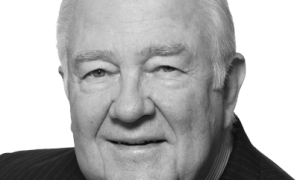Both as governor of California and as president of the United States, Ronald Reagan was devoted to the appointment of judges who understood the proper role of the judiciary and the important limitations the U.S. Constitution sets on government.
He took office as governor amid great controversy about the politicization of the judiciary and the quality of judicial appointments. So he initiated a new system for considering the candidates for California’s courts.
He organized in each county a group composed of a presiding judge, the president of the local bar association and one to three residents knowledgeable about the court system and the candidates. From their individual assessments, he was able to select the judge with the best qualifications and eliminate any who did not measure up to his exacting standards. As a result, he was recognized by members of both political parties as having appointed the best judges in California history.
As he was running for president, Ronald Reagan raised the issue of “judicial activism” among the federal courts. He noted that too many judges were substituting their own personal views, policy preferences and political ideas for what the Constitution and the statutes enacted by Congress actually provided. Many legal scholars and knowledgeable observers were concerned that we were no longer a government of laws, but a government where the result depended on who the judge might be. This was particularly true in such cases as religious liberty, freedom of speech, economic affairs and criminal justice. These were matters that most affected the personal lives of American citizens.
Most important to the president was the fact that judicial activism violated the basic constitutional principles of limited government and of checks and balances. When the federal courts turned from interpreting the law to making the law or improperly interfered with the actions of the executive branch, they usurped the powers of the other two branches.
Ronald Reagan was committed to restoring the concept of constitutional fidelity. Judges, he maintained, should base their decisions on the original meaning of the Constitution and of the federal statutes. He explained that the Founding Fathers had given careful thought to the role of the federal judiciary and thought that it should be independent and strong, but with its powers confined within the boundaries of a written Constitution and laws.
He considered this principle, known as judicial restraint, critical to the fair administration of justice. He said that the courts, like the Constitution itself, must not be liberal or conservative, but solely focused on following the law and preserving justice.
To remedy this situation, the president directed the Department of Justice to develop a method for examining candidates for the federal judiciary. In addition to the usual background investigation and evaluation by the American Bar Association, the attorney general and his staff established a system of interviews and extensive research into the candidates’ prior writings, speeches and judicial decisions to determine their proven understanding and allegiance to constitutional values.
By instituting within his administration this emphasis on judicial restraint and constitutionalism, President Reagan produced a virtual revolution in judicial philosophy. For years, the courts had departed from their legitimate role with little criticism from the legal community, the news media or political commentators. Now the question of “judicial activism” or “judicial restraint” became a matter of debate among law schools, the legal profession and public discourse.
The work of the Justice Department in carrying out the president’s directions on judicial selection provided the implementation of the “originalism” philosophy. Justices of the Supreme Court, as well as appellate and trial court judges, were appointed on the basis of this doctrine. To make clear his personal interest in restoring the rule of law and constitutional fidelity to judicial proceedings, President Reagan personally telephoned each of the new judges as he appointed them.
The president’s careful efforts produced the same results at the federal level as he had in California: a judiciary of increasingly high-quality judges committed to constitutional government.
Ed Meese holds the Ronald Reagan Chair at the Heritage Foundation and was U.S. attorney general during the Reagan administration.
First appeared in The Washington Times




